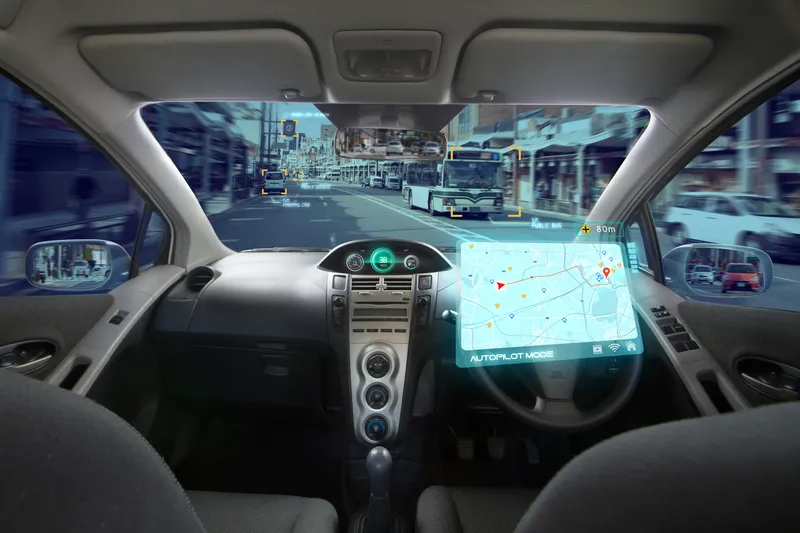Autonomous vehicles are likely to increase insurance claims related to product parameters rather than driver liability
New analysis from Frost & Sullivan, Impact of Automated Vehicles on Motor Insurance Market, finds that motor insurers will move away from the driver-centric strategy to follow one or a combination of three models as automated vehicles become common: product-centric evaluation; brand-centric evaluation; system-centric evaluation.
October 19, 2015
Read time: 2 mins
Autonomous vehicles are likely to increase insurance claims related to product parameters rather than driver liability
New analysis from2097 Frost & Sullivan, Impact of Automated Vehicles on Motor Insurance Market, finds that motor insurers will move away from the driver-centric strategy to follow one or a combination of three models as automated vehicles become common: product-centric evaluation; brand-centric evaluation; system-centric evaluation.
The current system of calculating motor insurance premiums places importance on driver-related factors such as age, gender and driving record. However, the introduction of autonomous vehicles will turn the spotlight on vehicle-related parameters. As the motor insurance business goes through this transformation, the future holds vast potential for novel risk evaluation models.
“Along with higher product liability, the responsibility of insuring the vehicle will shift from vehicle owners to manufacturers,” said Frost & Sullivan Automotive and Transportation senior research analyst Kamalesh Mohanarangam. “Further, all excesses currently covered by the insured will be shared among several stakeholders, such as road-operators and local transport authorities.”
As the risk of accidents will fall drastically with the advent of autonomous vehicles, the insurance premium to cover that risk too will drop significantly. Nevertheless, original equipment manufacturers (OEMs) and suppliers will increase insurance spend to cover their share of product liability risk, thereby offsetting the shrinkage in consumer-driven insurance revenues.
With OEMs and tier 1 suppliers looking to ensure fool proof product safety, methods to access risk and certify the product will assume greater importance. The traditional method of underwriting that uses historic data will take a back-seat, paving the way for a new breed of underwriters capable of evaluating driving algorithms and assigning a relevant risk priority number.
“Moreover, insurers will develop new products for risks arising out of innovations,” noted Mohanarangam. “For instance, with the digitalisation of automobiles, insurers will provide cyber cover for protection against cyber-attacks and hacks.”
In the wake of plummeting premiums, motor insurance will become part of other insurance policies and value-added packages as stakeholders look to new avenues of profit generation in a changing environment.
New analysis from
The current system of calculating motor insurance premiums places importance on driver-related factors such as age, gender and driving record. However, the introduction of autonomous vehicles will turn the spotlight on vehicle-related parameters. As the motor insurance business goes through this transformation, the future holds vast potential for novel risk evaluation models.
“Along with higher product liability, the responsibility of insuring the vehicle will shift from vehicle owners to manufacturers,” said Frost & Sullivan Automotive and Transportation senior research analyst Kamalesh Mohanarangam. “Further, all excesses currently covered by the insured will be shared among several stakeholders, such as road-operators and local transport authorities.”
As the risk of accidents will fall drastically with the advent of autonomous vehicles, the insurance premium to cover that risk too will drop significantly. Nevertheless, original equipment manufacturers (OEMs) and suppliers will increase insurance spend to cover their share of product liability risk, thereby offsetting the shrinkage in consumer-driven insurance revenues.
With OEMs and tier 1 suppliers looking to ensure fool proof product safety, methods to access risk and certify the product will assume greater importance. The traditional method of underwriting that uses historic data will take a back-seat, paving the way for a new breed of underwriters capable of evaluating driving algorithms and assigning a relevant risk priority number.
“Moreover, insurers will develop new products for risks arising out of innovations,” noted Mohanarangam. “For instance, with the digitalisation of automobiles, insurers will provide cyber cover for protection against cyber-attacks and hacks.”
In the wake of plummeting premiums, motor insurance will become part of other insurance policies and value-added packages as stakeholders look to new avenues of profit generation in a changing environment.








